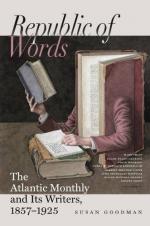These hawks my aged friend had often himself seen, in his own boyish days, sweeping round the cliffs and over the broad expanse of the Susquehanna. They were easily distinguished, he said, by the residents of that district, by their peculiar size and plumage, being of a breed not known to our native ornithology, and both being males. For many years, it was affirmed,—long after the outlaw had vanished from the scene,—these gallant old rovers of the river still pursued their accustomed game, a solitary pair, without kindred or acquaintance in our woods. They had survived their master,—no one could tell how long,—but had not abandoned the haunts of his exile. They still for many a year saw the wilderness beneath their daily flight giving place to arable fields, and learned to exchange their wary guard against the Indian’s arrow for a sharper watch of the Anglo-Saxon rifle. Up to the last of their appearance the country-people spoke of them as Talbot’s hawks.
This is a summary of the story, as it was told to me. No inquiry brought me any addition to these morsels of narrative. Who this Talbot was,—what was his crime,—how long he lived in this cave, and at what era,—were questions upon which the oracle of my tradition was dumb.
Such a story would naturally take hold of the fancy of a lover of romance, and kindle his zeal for an enterprise to learn something more about it; and I may reasonably suppose that this short sketch has already stirred the bosoms of the novel-reading portion, at least, of my readers with a desire that I should tell them what, in my later researches, I have found to explain this legend of the Cave. Even the outline I have given is suggestive of inferences to furnish quite a plausible chapter of history.
First, it is clear, from the narrative, that Talbot was a gentleman of rank in the old Province,—for he was kinsman to the Lord Proprietary; and there is one of the oldest counties of Maryland that bears the name of his family,—perhaps called so in honor of himself. Then he kept his hawks, which showed him to be a man of condition, and fond of the noble sport which figures so gracefully in the annals of Chivalry.
Secondly, this hawking carries the period of the story back to the time of one of the early Lords Baltimore; for falconry was not common in the eighteenth century: and yet the date could not have been much earlier than that century, because the hawks had been seen by old persons of the last generation somewhere about the period of our Revolution; and this bird does not live much over a hundred years. So we fix a date not far from sixteen hundred and eighty for Talbot’s sojourn on the river.
Thirdly, the crime for which he was outlawed could scarcely have been a mean felony, perpetrated for gain, but more likely some act of passion,—a homicide, probably, provoked by a quarrel, and enacted in hot blood. This Talbot was too well conditioned for a sordid crime; and his flight to the wilderness and his abode there would seem to infer a man of strong purpose and self-reliance.




